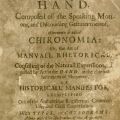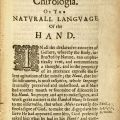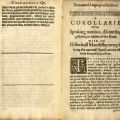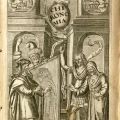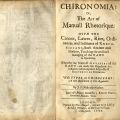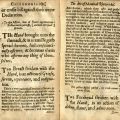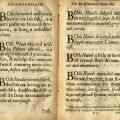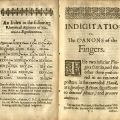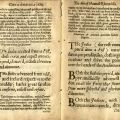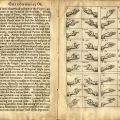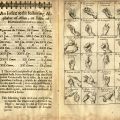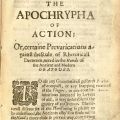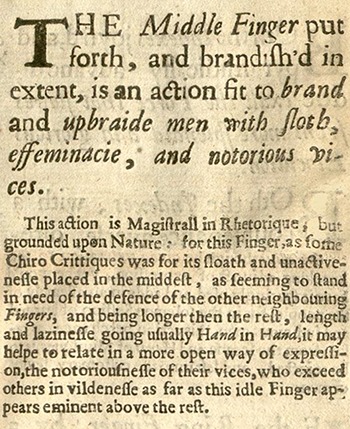 American Sign Language, the predominant sign language used by deaf communities in the United States and much of Canada, began in the 19th century. Prior to its creation, local sign languages were developed and used in the US and around the world. Our knowledge of these early sign languages is contained within contemporary written works that primarily described what are called "manual alphabets," or fingerspelling systems. Special Collections & Archives has one such work, Chirologia, or, The Naturall Language of the Hand, published in London by John Bulwer in 1644.
American Sign Language, the predominant sign language used by deaf communities in the United States and much of Canada, began in the 19th century. Prior to its creation, local sign languages were developed and used in the US and around the world. Our knowledge of these early sign languages is contained within contemporary written works that primarily described what are called "manual alphabets," or fingerspelling systems. Special Collections & Archives has one such work, Chirologia, or, The Naturall Language of the Hand, published in London by John Bulwer in 1644.
The book's lengthy subtitle explains that it contains descriptions and discussions of gestures used in converastion and public speaking, as well as what it terms manual rhetoric and rhetorical indigitations. The majority of Bulwer's work contains descriptions of what he calls "manual expressions," or gestures made with the hand. Some of his descriptions are familiar, as when he describes the action of pressing a hand to the chest as a show of grief or sorrow. Others are less familiar and somewhat confusing, as when he describes the action of striking the forehead with the hand as a reflection of both shame and admiration. Many of his descriptions include the impact of a particular gesture or motion upon spoken words, as when he describes the act of clasping and wringing hands as emphasizing statements of grief and sorrow, or the index finger extended from a fist and waved as a motion that both threatens or denounces. Others are familiar gestures today that were used differently centuries ago, as when he describes the extension of the middle finger as an act meant to chastise men "with sloth, effeminacie, and notorious vices."
Toward the end of his work, Bulwer discusses "Rhetoricall Indigitations," or finger alphabets and number systems. While he mentions that finger alphabets were in use by deaf people at the time of publication, he also explains that they could be used by hearing individuals as "an Alphabet of Privie cyphers, for any kinde of Secret intimation." He goes to great lengths to emphasize this point, later stating they can be used for "private wayes of Discourse or Intelligence." He includes a series of diagrams showing hands forming the shapes of letters and numbers, which bear little resemblance to modern American or British sign language, and concludes his work with a discussion of the use of gestures by ancient and modern orators.



